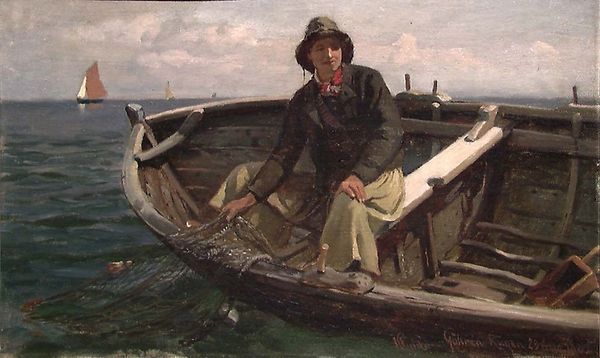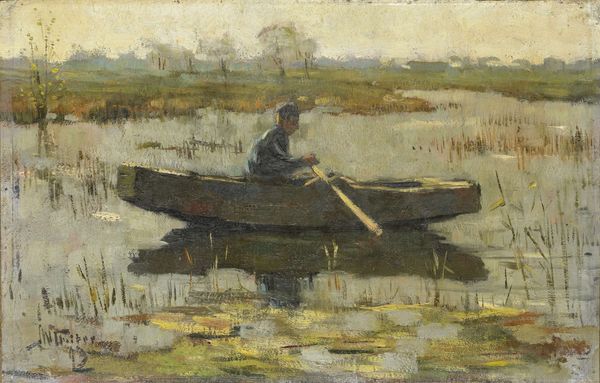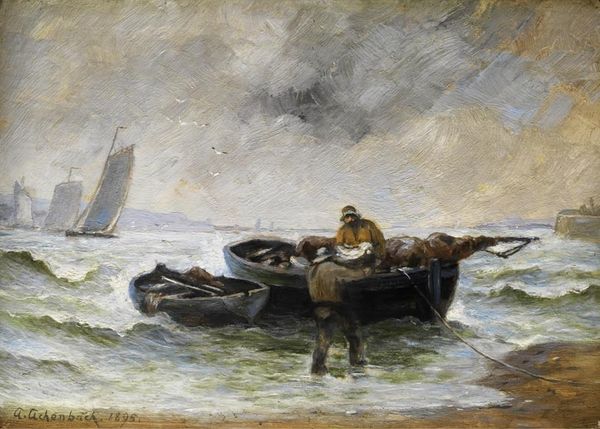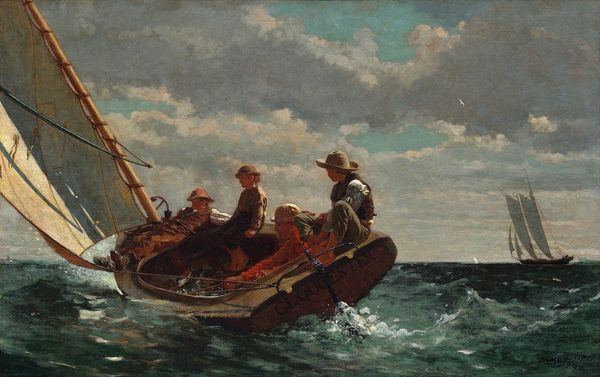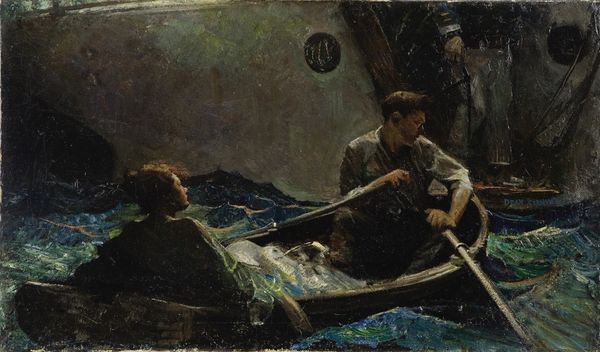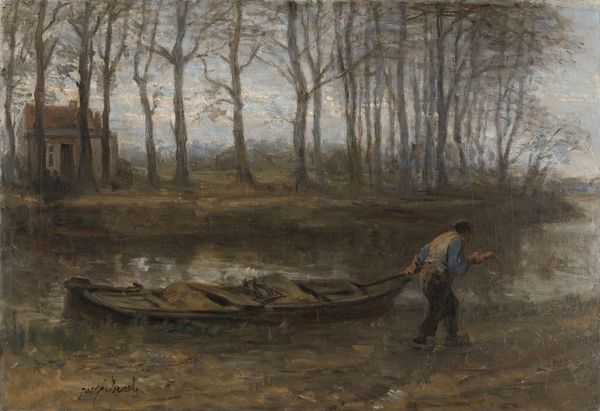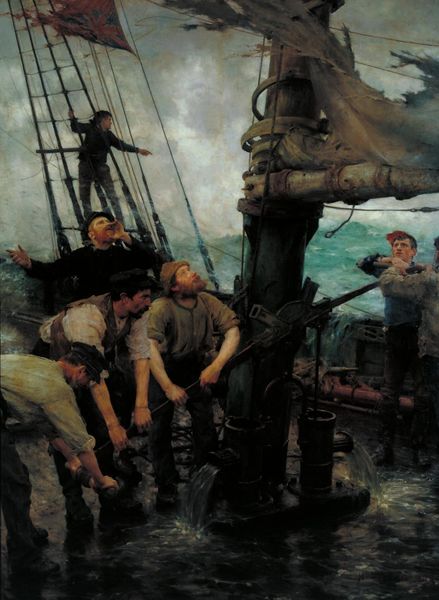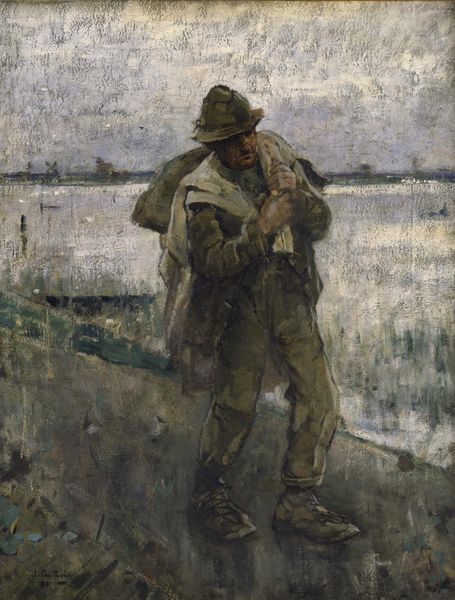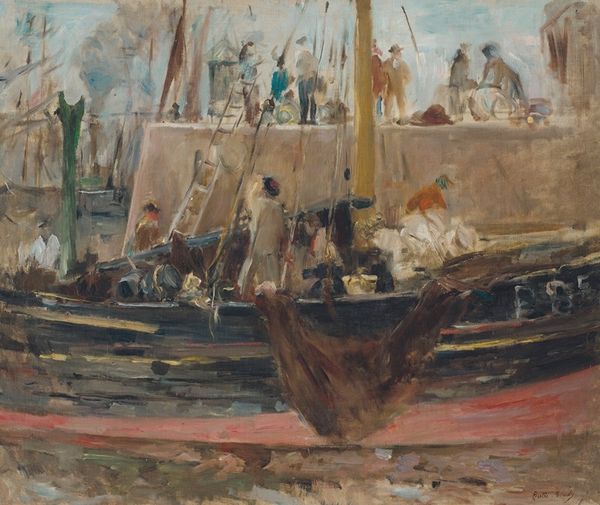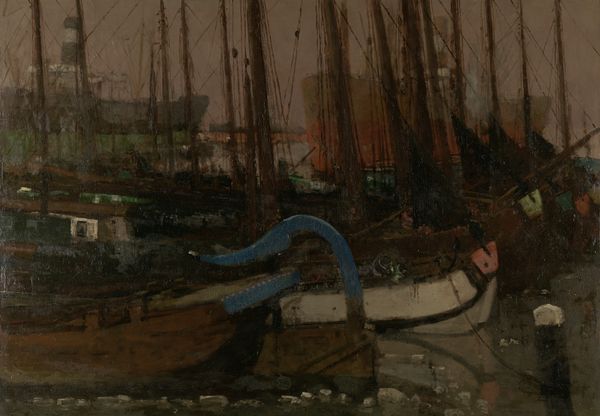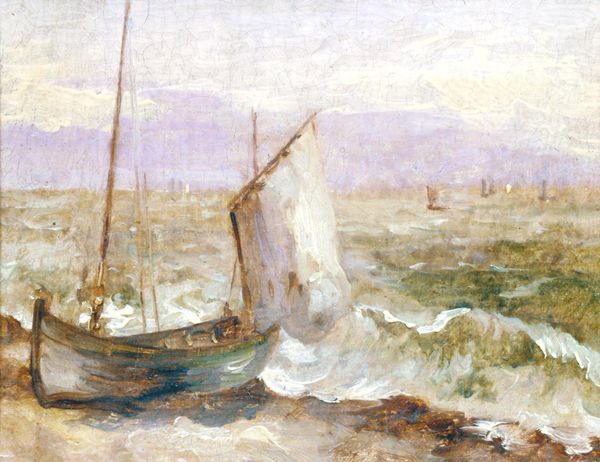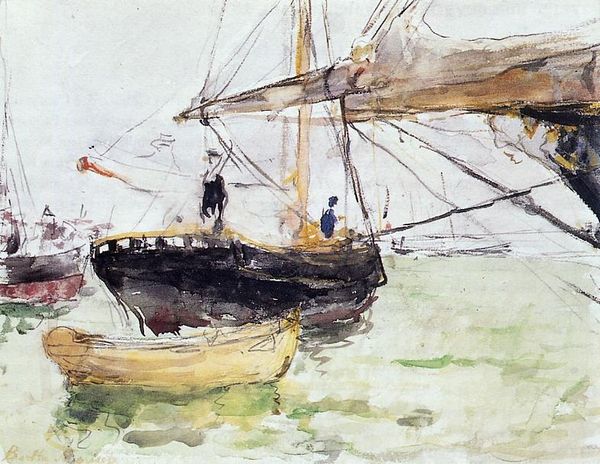
oil-paint
#
portrait
#
impressionism
#
oil-paint
#
landscape
#
oil painting
#
neo expressionist
#
portrait art
Dimensions: 79 x 99 cm
Copyright: Public domain
Editor: We're looking at "The Rower" by James Ensor, painted in 1883. It's an oil painting, depicting a man in a boat, with a blurry shoreline in the background. It feels kind of raw and immediate, like I can almost feel the dampness in the air. What do you make of it? Curator: This piece speaks volumes about the means of its own production. Ensor uses visible, textured brushstrokes—we see the labor of applying paint to canvas, the physicality of creation. Notice, too, how the composition is less about depicting a perfect scene and more about the materials themselves and how they are applied. The boat almost seems to be decaying from its exposure to elements. Editor: So you're focusing on how Ensor actually made the painting, rather than just what it shows? Curator: Precisely. Consider the social context. In 1883, artists were grappling with industrialization and the changing nature of work. Was Ensor, through this ‘everyman,’ commenting on the changing nature of labor itself, reducing man’s worth down to physical hard work? The brushwork isn’t traditionally beautiful but conveys a particular view about the value of material and of work itself. Is this art meant to be beautiful in the classical sense, or is it making a different claim about labor? Editor: I see what you mean. I guess I was initially caught up in the "Impressionistic" feel, but you're right, the rough textures and almost drab palette feel intentional and connected to the subject. Curator: It challenges the boundary between high art and, well, the everyday reality of manual labor, doesn't it? By highlighting the materiality of the paint, Ensor forces us to confront these questions, asking us about the cultural weight we assigned things based on materials or type of labour required. Editor: I hadn't considered it that way before. Looking at it now, it feels less like a fleeting impression and more like a statement on society itself, which makes this piece feel way more ‘heavy.’ Curator: Indeed. And isn't it fascinating how a focus on materials and context can shift our understanding so profoundly?
Comments
No comments
Be the first to comment and join the conversation on the ultimate creative platform.
